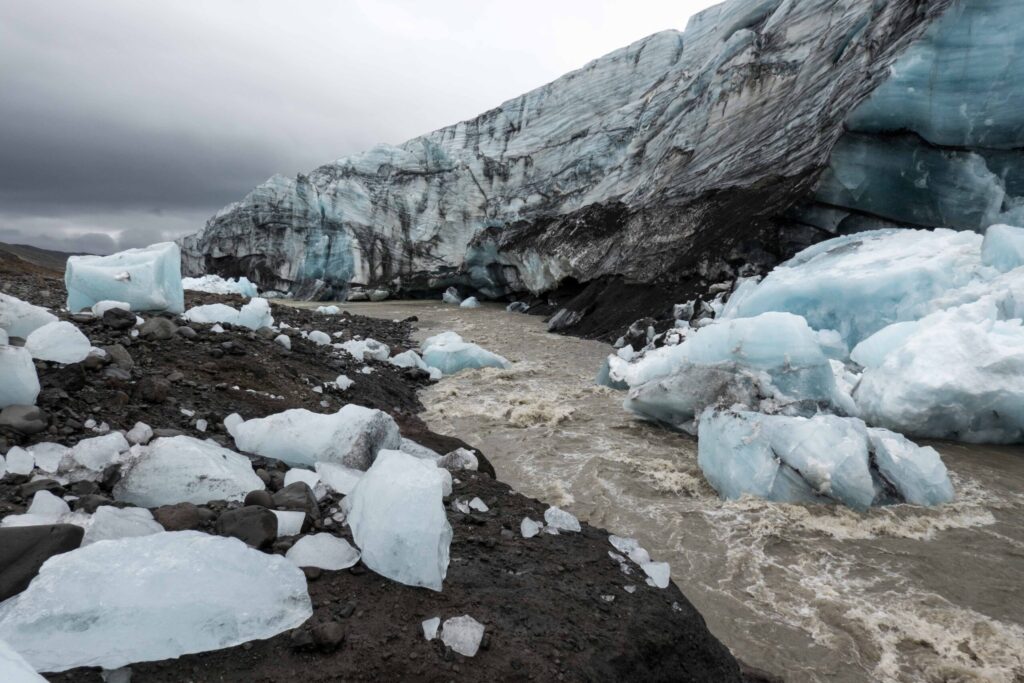What’s in a name! No country in Europe is as icy as Iceland. One tenth of the country is glaciated. Glaciers in Iceland are both hugely varied and accessible, making them well studied and crucial in our understanding of the workings of glaciers. From small mountain glaciers, calving snouts and surging lobes to your ordinary valley glaciers, Iceland has it all. And more: huge ice caps cover some of Europe’s most active volcanoes. The unique interplay of fire and ice creates fascinating landscapes that are nowhere else to be found.
The combination of global warming, regional climate fluctuations and a wide variety of glacier types make Iceland once again at the forefront of glacier studies. But for how long? In two hundred years only some relicts of once vast ice caps will remain. Will Iceland have to be renamed?
Most glaciers in Iceland are part of one of four ice caps in the south and middle of the country. Together with some mountain glaciers in the north and west, they cover approximately ten thousand square kilometers. The ice volume totals at 3000 km3, meaning the glaciers are three hundred meters thick on average. Of course not all glaciers are this fat: some are only tens of meters thick, others much more. At places, Iceland’s biggest ice cap Vatnajökull is almost a kilometer thick.
These impressive statistics can’t conceal from the fact that glaciers in Iceland, just like all over the world, are in a state of crisis. They already lost a quarter of their area in the past century and melt is accelerating, with all kind of consequences. The earth’s crust lifts up by as much as four centimeter per year as the ice melts above it, volcanic activity increases because ice caps no longer obstruct magma generation, rock avalanches become more frequent and sea level rises. Tourism is also affected: while guided glacier walks becomes increasingly difficult, new possibilities for kayak tours open up (Vatnajökull National Park). At the same time some smaller outlet glaciers are advancing for the moment thanks to regional weather patterns.

Search within glacierchange: